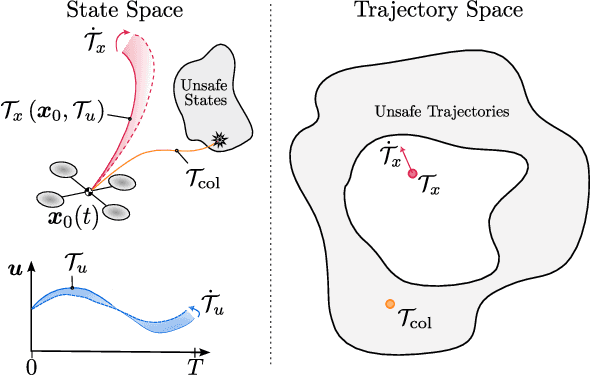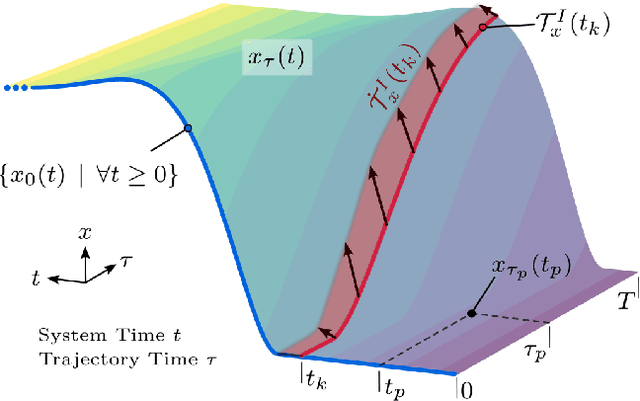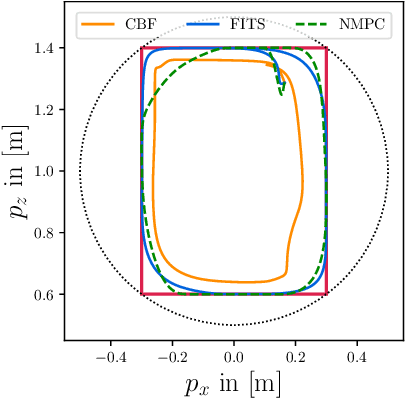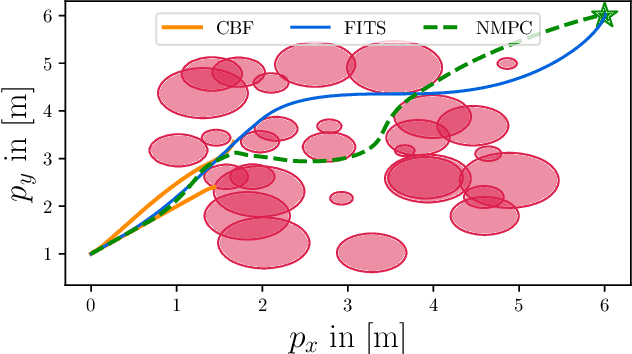Florian T. Pokorny
Nondeterministic Polynomial-time Problem Challenge: An Ever-Scaling Reasoning Benchmark for LLMs
Apr 15, 2025Abstract:Reasoning is the fundamental capability of large language models (LLMs). Due to the rapid progress of LLMs, there are two main issues of current benchmarks: i) these benchmarks can be crushed in a short time (less than 1 year), and ii) these benchmarks may be easily hacked. To handle these issues, we propose the ever-scalingness for building the benchmarks which are uncrushable, unhackable, auto-verifiable and general. This paper presents Nondeterministic Polynomial-time Problem Challenge (NPPC), an ever-scaling reasoning benchmark for LLMs. Specifically, the NPPC has three main modules: i) npgym, which provides a unified interface of 25 well-known NP-complete problems and can generate any number of instances with any levels of complexities, ii) npsolver: which provides a unified interface to evaluate the problem instances with both online and offline models via APIs and local deployments, respectively, and iii) npeval: which provides the comprehensive and ready-to-use tools to analyze the performances of LLMs over different problems, the number of tokens, the aha moments, the reasoning errors and the solution errors. Extensive experiments over widely-used LLMs demonstrate: i) NPPC can successfully decrease the performances of advanced LLMs' performances to below 10%, demonstrating that NPPC is uncrushable, ii) DeepSeek-R1, Claude-3.7-Sonnet, and o1/o3-mini are the most powerful LLMs, where DeepSeek-R1 outperforms Claude-3.7-Sonnet and o1/o3-mini in most NP-complete problems considered, and iii) the numbers of tokens, aha moments in the advanced LLMs, e.g., Claude-3.7-Sonnet and DeepSeek-R1, are observed first to increase and then decrease when the problem instances become more and more difficult. We believe that NPPC is the first ever-scaling reasoning benchmark, serving as the uncrushable and unhackable testbed for LLMs toward artificial general intelligence (AGI).
Can Visuo-motor Policies Benefit from Random Exploration Data? A Case Study on Stacking
Mar 30, 2025Abstract:Human demonstrations have been key to recent advancements in robotic manipulation, but their scalability is hampered by the substantial cost of the required human labor. In this paper, we focus on random exploration data-video sequences and actions produced autonomously via motions to randomly sampled positions in the workspace-as an often overlooked resource for training visuo-motor policies in robotic manipulation. Within the scope of imitation learning, we examine random exploration data through two paradigms: (a) by investigating the use of random exploration video frames with three self-supervised learning objectives-reconstruction, contrastive, and distillation losses-and evaluating their applicability to visual pre-training; and (b) by analyzing random motor commands in the context of a staged learning framework to assess their effectiveness in autonomous data collection. Towards this goal, we present a large-scale experimental study based on over 750 hours of robot data collection, comprising 400 successful and 12,000 failed episodes. Our results indicate that: (a) among the three self-supervised learning objectives, contrastive loss appears most effective for visual pre-training while leveraging random exploration video frames; (b) data collected with random motor commands may play a crucial role in balancing the training data distribution and improving success rates in autonomous data collection within this study. The source code and dataset will be made publicly available at https://cloudgripper.org.
Data-augmented Learning of Geodesic Distances in Irregular Domains through Soner Boundary Conditions
Mar 06, 2025Abstract:Geodesic distances play a fundamental role in robotics, as they efficiently encode global geometric information of the domain. Recent methods use neural networks to approximate geodesic distances by solving the Eikonal equation through physics-informed approaches. While effective, these approaches often suffer from unstable convergence during training in complex environments. We propose a framework to learn geodesic distances in irregular domains by using the Soner boundary condition, and systematically evaluate the impact of data losses on training stability and solution accuracy. Our experiments demonstrate that incorporating data losses significantly improves convergence robustness, reducing training instabilities and sensitivity to initialization. These findings suggest that hybrid data-physics approaches can effectively enhance the reliability of learning-based geodesic distance solvers with sparse data.
T-DOM: A Taxonomy for Robotic Manipulation of Deformable Objects
Dec 30, 2024Abstract:Robotic grasp and manipulation taxonomies, inspired by observing human manipulation strategies, can provide key guidance for tasks ranging from robotic gripper design to the development of manipulation algorithms. The existing grasp and manipulation taxonomies, however, often assume object rigidity, which limits their ability to reason about the complex interactions in the robotic manipulation of deformable objects. Hence, to assist in tasks involving deformable objects, taxonomies need to capture more comprehensively the interactions inherent in deformable object manipulation. To this end, we introduce T-DOM, a taxonomy that analyses key aspects involved in the manipulation of deformable objects, such as robot motion, forces, prehensile and non-prehensile interactions and, for the first time, a detailed classification of object deformations. To evaluate T-DOM, we curate a dataset of ten tasks involving a variety of deformable objects, such as garments, ropes, and surgical gloves, as well as diverse types of deformations. We analyse the proposed tasks comparing the T-DOM taxonomy with previous well established manipulation taxonomies. Our analysis demonstrates that T-DOM can effectively distinguish between manipulation skills that were not identified in other taxonomies, across different deformable objects and manipulation actions, offering new categories to characterize a skill. The proposed taxonomy significantly extends past work, providing a more fine-grained classification that can be used to describe the robotic manipulation of deformable objects. This work establishes a foundation for advancing deformable object manipulation, bridging theoretical understanding and practical implementation in robotic systems.
PACA: Perspective-Aware Cross-Attention Representation for Zero-Shot Scene Rearrangement
Oct 29, 2024



Abstract:Scene rearrangement, like table tidying, is a challenging task in robotic manipulation due to the complexity of predicting diverse object arrangements. Web-scale trained generative models such as Stable Diffusion can aid by generating natural scenes as goals. To facilitate robot execution, object-level representations must be extracted to match the real scenes with the generated goals and to calculate object pose transformations. Current methods typically use a multi-step design that involves separate models for generation, segmentation, and feature encoding, which can lead to a low success rate due to error accumulation. Furthermore, they lack control over the viewing perspectives of the generated goals, restricting the tasks to 3-DoF settings. In this paper, we propose PACA, a zero-shot pipeline for scene rearrangement that leverages perspective-aware cross-attention representation derived from Stable Diffusion. Specifically, we develop a representation that integrates generation, segmentation, and feature encoding into a single step to produce object-level representations. Additionally, we introduce perspective control, thus enabling the matching of 6-DoF camera views and extending past approaches that were limited to 3-DoF top-down views. The efficacy of our method is demonstrated through its zero-shot performance in real robot experiments across various scenes, achieving an average matching accuracy and execution success rate of 87% and 67%, respectively.
Feature Extractor or Decision Maker: Rethinking the Role of Visual Encoders in Visuomotor Policies
Sep 30, 2024



Abstract:An end-to-end (E2E) visuomotor policy is typically treated as a unified whole, but recent approaches using out-of-domain (OOD) data to pretrain the visual encoder have cleanly separated the visual encoder from the network, with the remainder referred to as the policy. We propose Visual Alignment Testing, an experimental framework designed to evaluate the validity of this functional separation. Our results indicate that in E2E-trained models, visual encoders actively contribute to decision-making resulting from motor data supervision, contradicting the assumed functional separation. In contrast, OOD-pretrained models, where encoders lack this capability, experience an average performance drop of 42% in our benchmark results, compared to the state-of-the-art performance achieved by E2E policies. We believe this initial exploration of visual encoders' role can provide a first step towards guiding future pretraining methods to address their decision-making ability, such as developing task-conditioned or context-aware encoders.
Co-Designing Tools and Control Policies for Robust Manipulation
Sep 17, 2024Abstract:Inherent robustness in manipulation is prevalent in biological systems and critical for robotic manipulation systems due to real-world uncertainties and disturbances. This robustness relies not only on robust control policies but also on the design characteristics of the end-effectors. This paper introduces a bi-level optimization approach to co-designing tools and control policies to achieve robust manipulation. The approach employs reinforcement learning for lower-level control policy learning and multi-task Bayesian optimization for upper-level design optimization. Diverging from prior approaches, we incorporate caging-based robustness metrics into both levels, ensuring manipulation robustness against disturbances and environmental variations. Our method is evaluated in four non-prehensile manipulation environments, demonstrating improvements in task success rate under disturbances and environment changes. A real-world experiment is also conducted to validate the framework's practical effectiveness.
Forward Invariance in Trajectory Spaces for Safety-critical Control
Jul 17, 2024



Abstract:Useful robot control algorithms should not only achieve performance objectives but also adhere to hard safety constraints. Control Barrier Functions (CBFs) have been developed to provably ensure system safety through forward invariance. However, they often unnecessarily sacrifice performance for safety since they are purely reactive. Receding horizon control (RHC), on the other hand, consider planned trajectories to account for the future evolution of a system. This work provides a new perspective on safety-critical control by introducing Forward Invariance in Trajectory Spaces (FITS). We lift the problem of safe RHC into the trajectory space and describe the evolution of planned trajectories as a controlled dynamical system. Safety constraints defined over states can be converted into sets in the trajectory space which we render forward invariant via a CBF framework. We derive an efficient quadratic program (QP) to synthesize trajectories that provably satisfy safety constraints. Our experiments support that FITS improves the adherence to safety specifications without sacrificing performance over alternative CBF and NMPC methods.
Adaptive Distance Functions via Kelvin Transformation
Jun 05, 2024Abstract:The term safety in robotics is often understood as a synonym for avoidance. Although this perspective has led to progress in path planning and reactive control, a generalization of this perspective is necessary to include task semantics relevant to contact-rich manipulation tasks, especially during teleoperation and to ensure the safety of learned policies. We introduce the semantics-aware distance function and a corresponding computational method based on the Kelvin Transformation. The semantics-aware distance generalizes signed distance functions by allowing the zero level set to lie inside of the object in regions where contact is allowed, effectively incorporating task semantics -- such as object affordances and user intent -- in an adaptive implicit representation of safe sets. In validation experiments we show the capability of our method to adapt to time-varying semantic information, and to perform queries in sub-microsecond, enabling applications in reinforcement learning, trajectory optimization, and motion planning.
Walk on Spheres for PDE-based Path Planning
Jun 03, 2024Abstract:In this paper, we investigate the Walk on Spheres algorithm (WoS) for motion planning in robotics. WoS is a Monte Carlo method to solve the Dirichlet problem developed in the 50s by Muller and has recently been repopularized by Sawhney and Crane, who showed its applicability for geometry processing in volumetric domains. This paper provides a first study into the applicability of WoS for robot motion planning in configuration spaces, with potential fields defined as the solution of screened Poisson equations. The experiments in this paper empirically indicate the method's trivial parallelization, its dimension-independent convergence characteristic of $O(1/N)$ in the number of walks, and a validation experiment on the RR platform.
 Add to Chrome
Add to Chrome Add to Firefox
Add to Firefox Add to Edge
Add to Edge